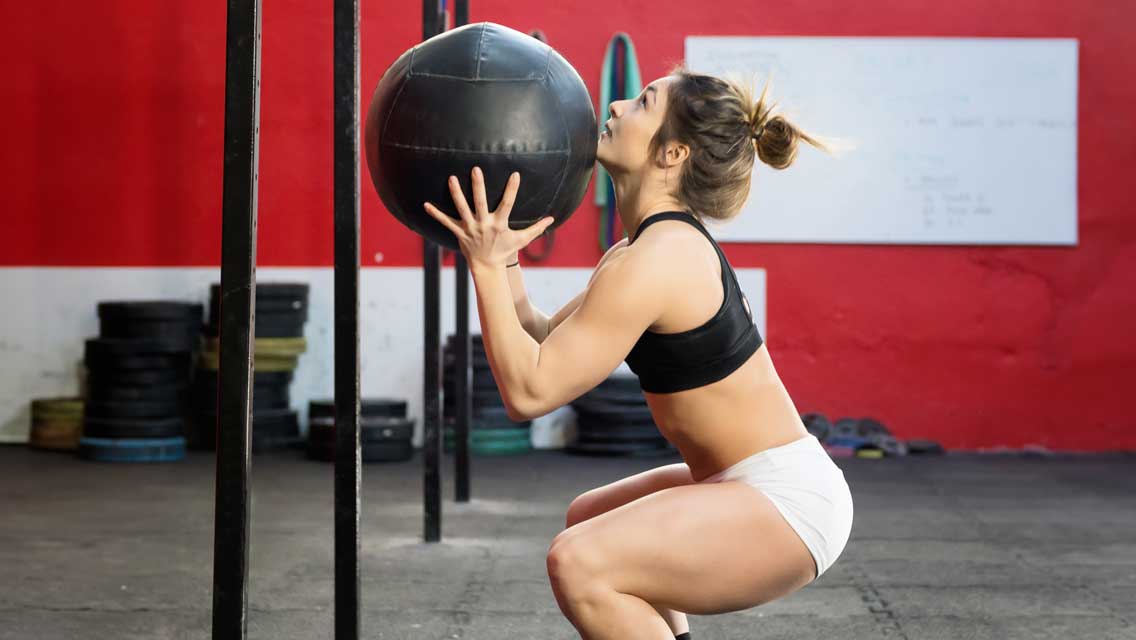PMS. Cramps. Mood swings. Nausea. Bloating. Acne. Night sweats. Exhaustion. These are all common words in articles and conversations about women’s menstruation and health.
But however common these symptoms may be, they aren’t something a woman needs to deal with each month. A woman’s monthly cycle, composed of four phases — follicular, ovulation, luteal, and menstrual — can be empowering instead of debilitating, says Alisa Vitti, a functional-nutrition and women’s-hormone expert, and graduate of Johns Hopkins University and the Institute for Integrative Nutrition. In each phase of the cycle, women can thrive by choosing the foods and forms of exercise that best meet their bodies’ needs. Getting into a rhythm of supporting the body in each phase can help women live a more fulfilled, focused, healthy, and joyful life. It can also bring a new level of respect for all the work the body does in a month, and make self-care a priority.
So what is Cycle Syncing, and how does it play out realistically in a woman’s life? We asked Vitti, the creator of the Cycle Syncing Method and the MyFLO Period Tracker app and author of WomanCode: Perfect Your Cycle, Amplify Your Fertility, Supercharge Your Sex Drive, and Become a Power Source, and here’s what she had to say about optimizing hormones through lifestyle choices.
Experience Life | What is cyclical self-care, and why is it helpful for women to sync their nutrition, exercise, sex, and focus with their cycle?
Alisa Vitti | Cyclical self-care focuses on selecting food, exercise, and tasks that support hormone balance in each week of the cycle. This is the true differentiator of the FLO protocol — the integration of you and your body’s needs into the plan itself. In order to restore and reclaim your hormonal health, everything about your diet and lifestyle should be relevant and relative to your female biochemistry.
Hormonal ratios shift each week, so adjusting food and lifestyle priorities allows you to make more hormones and break them down more efficiently. These adjustments also address micronutrient deficiencies, prevent stress and burnout, and let you find more enjoyment doing things in the right timing.
EL | What is happening with hormones in each of the four phases of a monthly cycle, and what role do hormones play in energy, mood, nutritional needs, sex, and focus?
AV | Estrogen, progesterone, testosterone, insulin, and cortisol shift each week of your cycle. As a result, you need to eat specific foods to help balance this out. When done correctly, you feel energized, happy, and focused all month, just in slightly different directions each week. Some weeks you’ll want to focus on networking, and others on task completion. Some weeks you’ll want to eat more raw foods, and others more cooked. Learning which phase you’re in and what to do is essential. MyFLO takes all the guesswork out of knowing where you are in your cycle.
EL | If women are training for an intense athletic event, like a triathlon, how would their training change if they were syncing exercise with their cycle?
AV | Simple! They’d do cardio and HIIT in the first half of their cycle and they’d focus on slow strength training and flexibility in the second half. The predominant “push-till-it-hurts” mentality around exercise is entirely rooted in male physiology and a 24-hour circadian rhythm that loses sight of natural, predictable female fluctuations throughout the month. By your very nature, your biochemistry is composed of an ever-changing symphony of hormonal ups and downs. Your body simply isn’t the same day in and day out, so why would you constantly put it through the same hardcore workout routine when it’s begging for something different?
Research has shown that increased estrogen affects your body’s sensitivity to insulin and subsequently affects fat storage and burning. While your hormones may be able to handle more intense exercise in the first half of your cycle, going extra hard in the later luteal phase will only drain your nutritional resources, encourage fat storage, and waste muscle mass.
To add insult to injury, increasing your cardiovascular efforts requires more calories (during the PMS time when you have more carb cravings or bingeing), which in turn sabotages your training efforts and leaves you frustrated and running back to the gym to up your cardio yet again. To avoid this issue, you can perform movements that support your body during each phase of your cycle.
EL | For people with an autoimmune issue, how can they safely cycle sync with food? Do you have any recipe recommendations?
AV | Autoimmune issues can be exacerbated by cycle changes due to the interplay of the endocrine system with the immune system. Depending on the type of autoimmune issue, it can flare during ovulation, or in the second half of the cycle. Cyclical self-care can help lessen the effect. All the foods you’ll eat are anti-inflammatory, but they can be modified with any specific allergies you may have.
EL | Although men don’t menstruate, do they have cycle phases on a monthly basis? Is there a way for them to support their bodies in Cycle Syncing also?
AV | No — this is not applicable for men monthly; they do have hormonal patterns during each day, though.
For more resources on Cycle Syncing, visit https://www.floliving.com, and watch for Vitti’s book, set to launch in 2019.




This Post Has 0 Comments